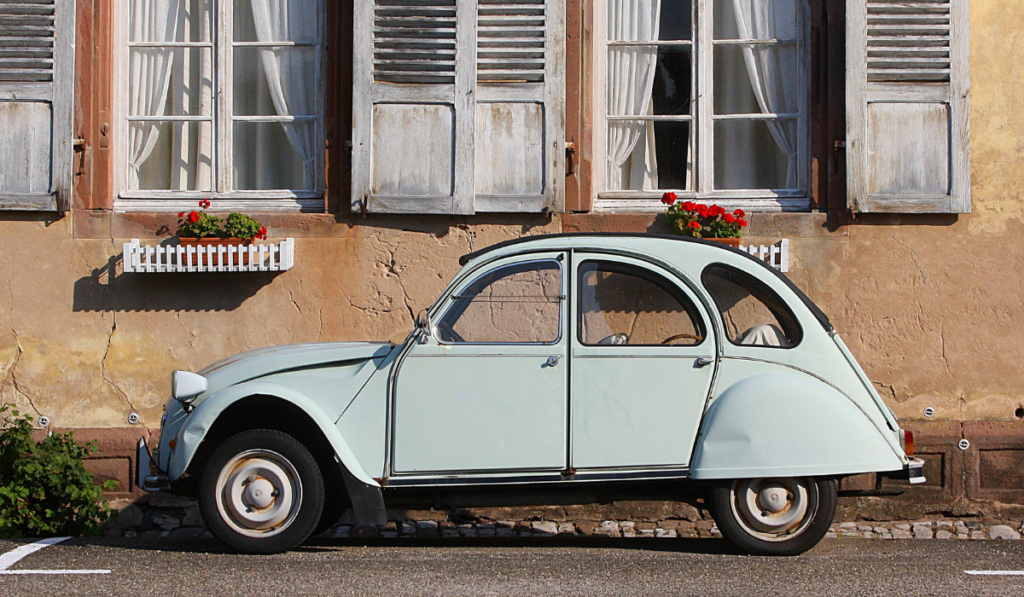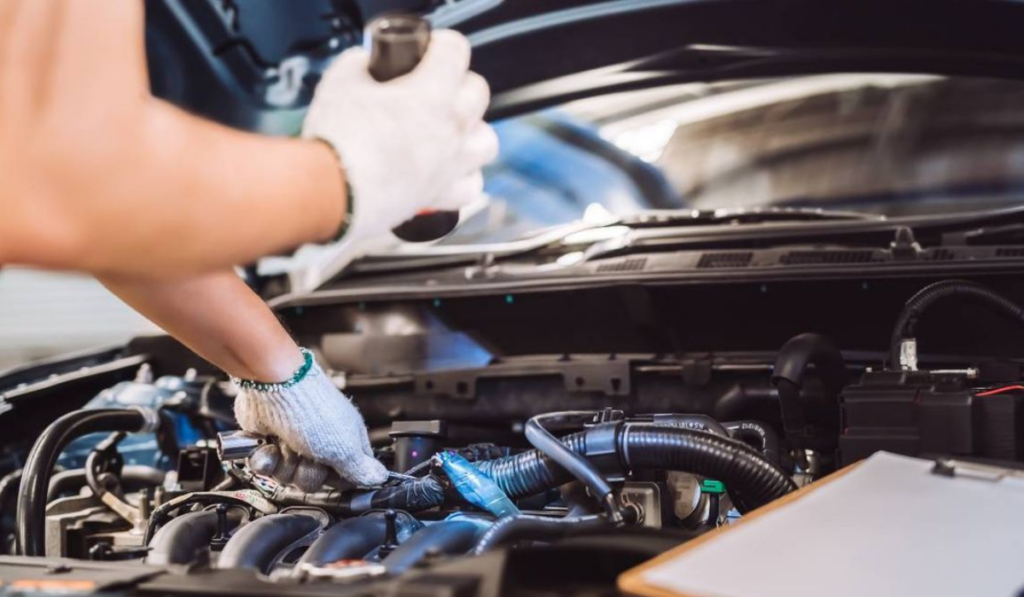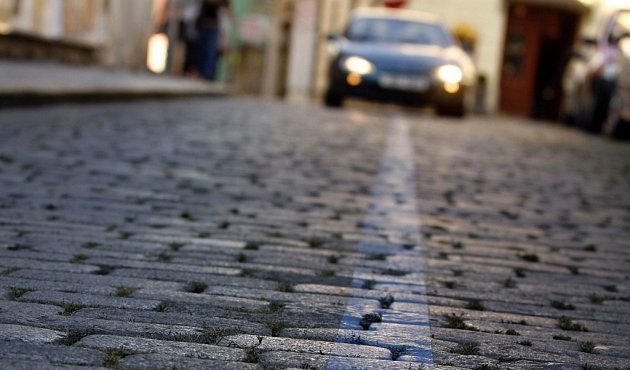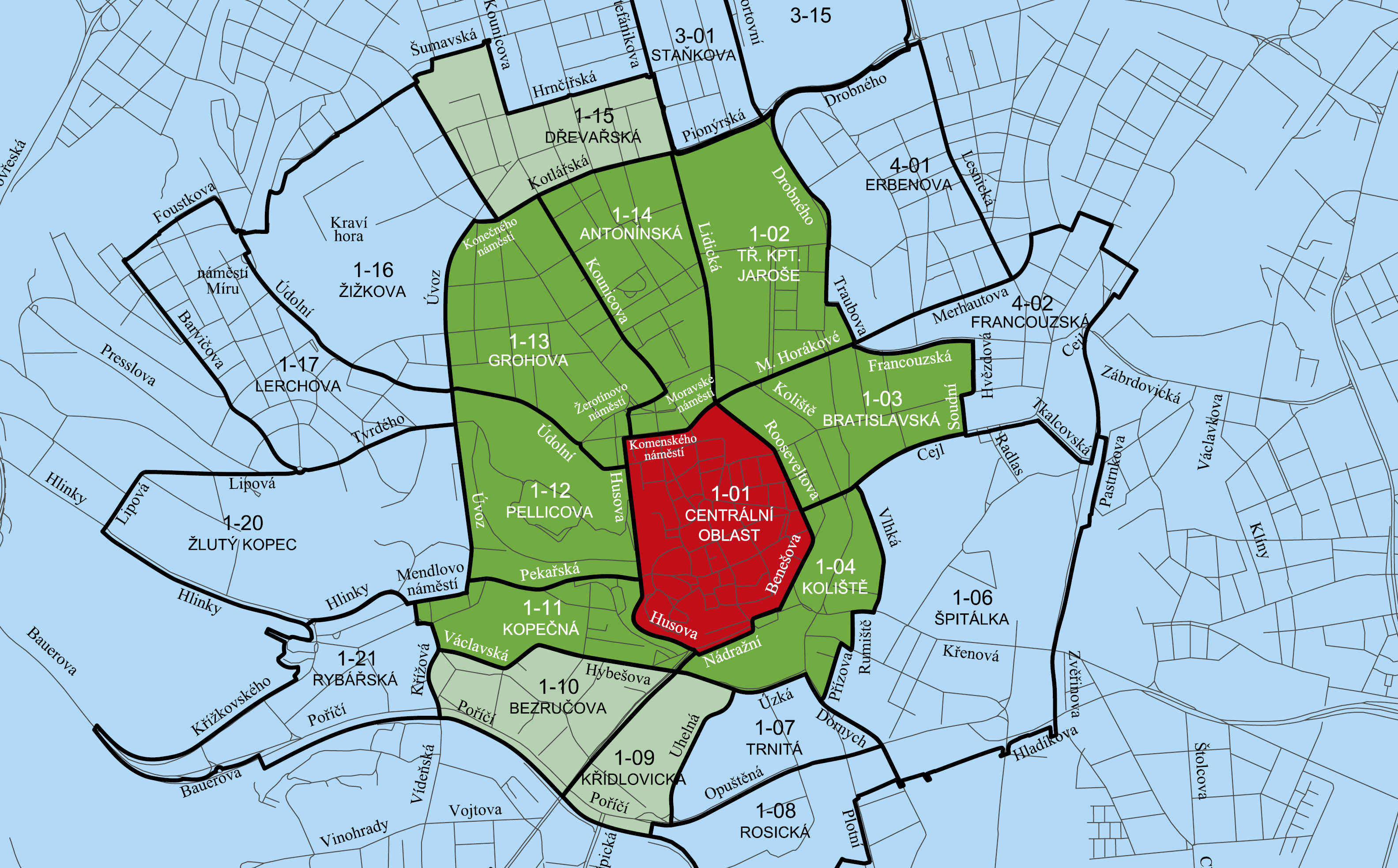Buying a used car in the Czech Republic

Lots of people in the Czech Republic choose to buy a used car over a brand new piece, and for a good reason: you can buy a perfectly fine car and save yourself a bucketload of money. But there can be many pitfalls in buying a pre-owned car. We’re lucky to have a car enthusiast on our team. Jarda Soukup wrote down a guide with the most common problems and dangers, and how to avoid them before you sign the purchase contract.
- Selecting the right type of car
- Where to buy
- Deciding on a car – what to check and how
- Sign a proper contract
- Register your new car
Before you even start selecting a car, be aware of two facts:
a] The best cars never enter the market
Properly serviced cars that have never been involved in an accident, don’t reach the used car market – they get sold between friends. Therefore, as the very first step, ask your friends if they know of anyone trustworthy thinking to sell their cars. It doesn’t almost matter what type of car theirs is (unless they drive a convertible while you’re in dire need of a people carrier); it’s always better to buy a car from someone you know and trust, even though the type of the car wouldn’t be your first choice otherwise.
No luck among friends? You will have to search the used car market, then. But be aware that pretty much every car there has an issue or two. It often is just a tiny detail (scratches, the comfort equipment not functioning, etc), but there are also cars with serious problems (altered mileage, a cover-up of a major accident, etc). Always be cautious! We’ll tell you how – continue reading.
b] Buying a used car is always a risk
You are purchasing a product which has already been handled by someone else and you never know how well. Technical or other troubles are very likely; therefore, your goal is not to avoid issues (that would be almost impossible), but to be well aware of them before you make the purchase, so you can get them reflected in the price. Every car finds its buyer; dealers know this and rely on it. Try to make the purchase in a way that is fair for you.
Now you’ve been warned. So buckle up and let’s get into this properly!
1] Selecting the right type
To know what type of car you’re searching for, try to answer these three questions:
How much do I care about a brand?
If you care to drive a specific brand, be aware it might push the price up. For example, in the Czech Republic, Skoda cars are always more expensive than their competition, for their good reputation and because many drivers appreciate that they’re made by Czech hands. Besides that, premium brands tend to be more expensive too, just because it feels better to drive a BMW than Ford, even though the Ford car might be in better condition and the street credit of the BMW is long gone (it’s only cool to have a premium car when it’s new or up to a year or two old).
What am I going to use the car for?
This will help you decide on the size. It is not needed to buy a limousine for only citywide travelling. It is equally not necessary to always buy an estate, just because you might want to transport a washing machine one day. There are delivery or van rental services for those extraordinary occasions. Always buy only the size you really need. Besides their higher petrol consumption, bigger cars are often better equipped, which means there might be more technology that can break up over time. Save money by sticking to your size.
The same applies to the engine. It’s true that diesel-powered cars achieve better mileage, but you need to know that these engines are built for long-distance travelling and they suffer a lot in the city. Saving up on fuel might very quickly become very expensive. The same applies to turbocharged petrol engines. They are better for long travels. If you don’t mind the less dynamic option and only commute around the city, it might be advisable to select only a naturally aspirated car. This can, again, save you a lot of money.
How much am I able and willing to pay?
Establish a budget and adjust your expectations to it. 500,000 CZK or more will give you some good choices. If you can only afford 100,000 CZK or less, expect that it will be hard to find a well-functioning car.
If you need to keep the budget low, look for a car in the best available shape, even if it’s one you don’t like visually, or in terms of a brand. Also, have some spare money prepared for additional expenses in your first months together. There will likely be repairs needed.
2] Where to buy
As already mentioned, the best place to get a used car is from a trustworthy friend. Here are your other options:
1) Certified pre-owned cars from new-car dealerships
Certified cars coming from shops that also deal with new cars are your second-best option. They have gone through a very detailed technical check-up before being registered as certified pre-owned and are usually in good shape. Their regular maintenance has likely been done at the brand’s service station which assures the use of original parts and liquids. If the car was made in the Czech Republic, this is even more likely. They often come with a 1-year warranty, too.
These certified pre-owned cars are also the most expensive. The asking price for any such car will most likely be higher than for the same model sold elsewhere. Only young cars (3-5 years) usually qualify for a certificate.
The biggest dealerships providing a selection of certified pre-owned cars in Brno are:
Skoda, VW, Audi: Autocentrum ROS
Peugeot: Famko
Hyundai: Auto BALVIN
BMW: Renocar
Mercedes-Benz: Hošek Motor
Toyota: C&K Auto
2) Big used car dealerships
Unlike new car dealerships, big used car dealerships have a much bigger selection of cars. They don’t limit themselves to only a few brands and they offer a wide range of vehicles from all price ranges. Some of them offer a technical certification for a portion of their cars, too.
However, they are a third-party entity that doesn’t always have full access to the vehicle’s history. If we talk about a new-car dealership, especially if the car was sold new in the Czech Republic; then the car in question was likely undergoing maintenance at the given dealer who would know about everything that was done to the car. If it was sold in the EU, they still can, at least, contact the dealer from the country of the car’s origin and verify it. This is not necessarily true for used car dealerships.
The biggest used cars dealerships in Brno are:
3) Small used car dealerships
These are often located at the edge of the city (or in a small town) and don’t feel so anonymous as the big ones. They typically don’t invest in marketing. They usually offer a selection of older and cheaper cars.
Buying your new vehicle there might seem more convenient money-wise, but it comes with increased risks. They often aren’t able to check the car as thoroughly as the big dealerships, since they lack the big and highly specialized service station on their premises. Also, they might be more willing to accept a worse car (possibly damaged and then poorly repaired) which the big dealerships would refuse.
4) Directly from the owners through online portals
(Facebook Marketplace and similar)
The selection here is usually the widest and you get the best price because you don’t have to pay any commission to a dealer. Yet, you need to remember that this really is the wild west. You have no guarantee, no technical check-up. Buying a car through these platforms can save you a lot of money, but it can also cost you your last penny. It indeed is like a chocolate box – you never know what you taste.
3] Deciding on a car – what to check and how
If you found a specific car in an ad, make sure to check these before traveling to the dealership:
- Get the VIN (Vehicle Identification Number) of the desired car. When you have this number, use the services of Cebia AutoTracer. This service will list the car’s full history, including all the maintenance done to the car as well as all possible accidents. It has quite a high success rate in terms of finding out if something wrong happened to your selected car and it also shows you a fair price suggestion. The service is paid (199 CZK per car and higher, depending on the amount of information available), but we highly recommend using it anyway.
- You can also check the model’s statistical reliability. If you want to, this website will help you. However, you need to keep in mind that a good statistical result does not assure that your selected piece will also be reliable (improper maintenance can cause serious troubles to any model). This list is, therefore, only orientational.

When you enter the dealership, make sure that you:
- Properly check the selected car visually. Look for different shades of various parts (bumpers, fenders, doors, etc). If you notice a slightly different colour, it means that the given part has likely been hit and replaced, which should be reflected in the price of the car. The same applies to spaces between the body parts. They should be narrow and regular. Any changes in the width between the body panels may suggest a replaced part.
- Properly check the windows. Every window has a text in one corner that describes the producer of the glass, but it also contains a small number at the end of this text (this rule unfortunately does not apply to Japanese cars). This one or two-digit number represents the year in which the window was made. This number must either match the year in which the car was made or it may be one year older. Any other number means that the window has been replaced (possibly due to a crash).
- Check the interior for any damage. The wear and tear of the most often used parts (steering wheel, gear lever, door handles, etc) should reflect the mileage done on a car. If a car with 200,000 km has a steering wheel that looks brand new, it must have been replaced. Slightly push the middle of the steering wheel to find out if there still is an Airbag. If, when pushing, you feel some hard structure, the bag is there. If you don’t, the car has been through a serious accident and has not been fixed properly. This should, again, be reflected in the price.
- Check that every piece of equipment in the interior is functioning. Check lights, window wipers, radio, air conditioning, electric windows and mirrors, etc. Every dysfunctional feature must be reflected in the price.
- Have the car checked on a hanger from below. You need to see the chassis of the car to notice any leaks and the amount of rust. All troubles should be reflected in the price. We highly recommend having this step done by a professional mechanic. If you know that some of your friends are interested in cars, ask them to accompany you. If you don’t, at least look for a dealership that can provide you with the equipment needed to pull the car up so you can see it and have the visible issues explained by the professional.
- Take the car for a test drive. This test drive should be at least 20-30 minutes long and it should encompass all types of roads, including city, country, and motorway travelling. You should be allowed to reach a maximum speed of 130 km/h on a motorway, too. During this test drive, focus not only on how comfortable it is for you to drive this car, but also on any strange sounds or vibrations. Of course, a 10-year-old car won’t drive as quietly as a new one, some level of worn-out noise is normal. But if there is strong noise or vibration, discuss it with the dealer. It might be a technical issue which should, again, be reflected in the price. We again recommend being accompanied by an informed friend or a professional.
If you are looking for a professional who could help you check the car, it is advisable to contact companies providing these services. For example, people from Automato are happy to help and able to communicate in English. However, please, understand that we don’t have any recommendation to nor personal experience with these services.
4] Sign a proper contract
If the desired car passes all these points and you are ready to sign a contract, we recommend using this template. It has been written by a professional lawyer and it includes all your rights and the dealer’s obligations. Some used car dealerships have their own, it is up to you to decide if you want to use theirs or the one provided here. However, remember, it is their right to choose, too.
5] Register your new car
After the purchase, you’re legally required to register the car as the new owner. Our consultants wrote a step-by-step guide on how to go about this.
Register the car
After the purchase, you're required to register the car as the new owner.
This was a long article, but with all its points valid. We believe that if you follow this detailed guide, you will obtain a car which was at least fairly priced. And that is what matters the most. Good luck!

